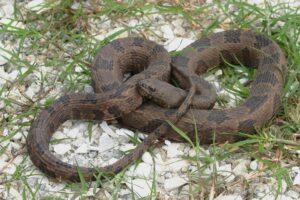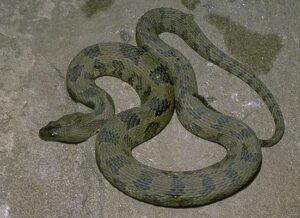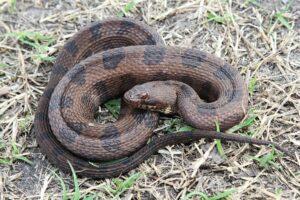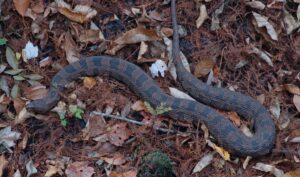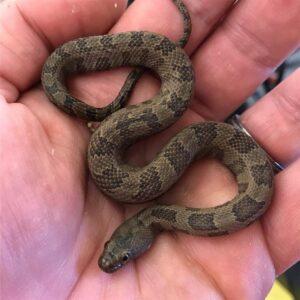Brown water snakes are a large colubrid species native to the southeastern regions of the United States. Since they are widely found throughout their distribution range, studying their behavior and population can help understand the impacts of human activity in a specific aquatic ecosystem.
These snakes are often mistaken for cottonmouths, the venomous pit viper, and killed by humans in self-defense. Another species, the common brown water snake (Lycodonomorphus rufulus), is sometimes referred to as brown water snakes, but they are found only in and around South Africa.
Scientific Classifications
- Suborder:Serpentes
- Family:Colubridae
- Subfamily:Natricinae
- Genus:Nerodia
- Species:N. taxispilota
Conservation Status
Description
Size
A full-grown brown water snake can be between 30 and 60 inches (around 75 and 150 cm), with the longest recorded specimen measuring 69 inches (175cm).
These snakes are pretty heavy-bodied, and the females grow much larger than the males.
Color and Appearance
Its dorsal side is tan to dark brown, with around 25 dark squarish blotches running down the back and smaller spots on the sides. The dorsal scales are arranged in 27-33 rows, which is more than other North American water snakes. Like all the snakes in the Natricinae subfamily, it has a divided anal plate, and its dorsal scales are strongly keeled.
Are They Dangerous
In case of an encounter, their first response would be to flee and hide underwater. However, if cornered, the snake will bite repeatedly and painfully. Though non-venomous, the bite can get infected and need medical attention.
When captured or attacked, they also release a foul-smelling substance from their anal glands.
Brown Water Snakes at a Glance
Distribution
Found at elevations up to 500 ft from sea level – the coastal plains and southeastern Piedmont, from southeastern Virginia, through both North and South Carolina, Georgia, and Florida, to Missouri, Alabama, Mississippi, and Louisiana in the west
Lifespan
Their average lifespan is around 9 years.
Predators
Adults do not have many predators due to their large size; raccoons, large birds of prey, American alligators, and larger snakes like cottonmouths and eastern kingsnakes may kill them, especially the juveniles
Reproduction
Ovoviviparous (females give birth to live young after the eggs hatch inside their body)
Their mating season starts in spring, and mating can occur on the ground or tree branches. The baby snakes are 7-10.5 inches (18-27 cm) long at birth, with males being longer than females. They have a coloration similar to that of the adults. A typical brood can contain anywhere between 20-60 babies.
Similar Species
Vs. Cottonmouth
The similarities in the body color and head shape of these two species often lead to misidentification between these two species. The most obvious difference would be the color of the inside of their mouths. Cottonmouths have a distinct white color inside their mouth, while brown water snakes have dark mouths.
Source
floridamuseum.ufl.edu, i.pinimg.com, animaldiversity.org, nas-national-prod.s3.amazonaws.com, scontent.fccu13-1.fna.fbcdn.net

